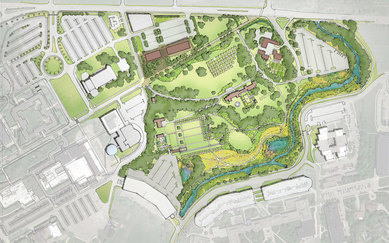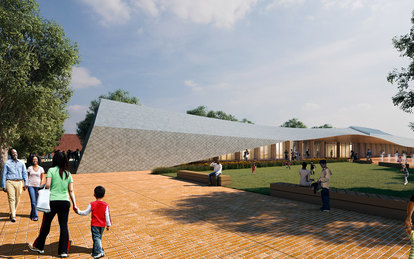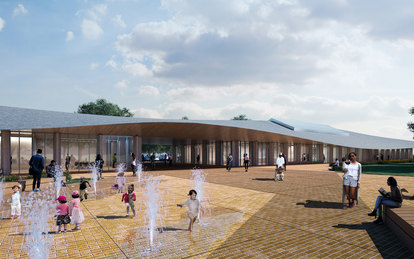Applewood Estate Master Plan
Built for pioneering General Motors executive Charles Stewart Mott, Applewood Estate became the longtime residence for one of the nation’s most generous families of benefactors. This master plan developed for the Ruth Mott Foundation strengthens the physical and intangible ties between Applewood and the community, while honoring Ruth Mott’s intention for the estate to stand as a tribute to the legacy of her husband, C.S. Mott.
Client
Ruth Mott Foundation & Applewood Estate
Location
Flint, Michigan
Markets/Services
Archives & Collections, Campus Planning, Cultural, STEM (Science, Technology, Engineering, Math), Urban Environments, Urban Planning, Visitor Centers
It is difficult to overstate the Mott family’s legacy to Michigan and the world. Charles Stewart Mott came to Flint as a young man with a flourishing axle business; in subsequent years, he became a top executive at General Motors; served three terms as Flint’s mayor; funded Flint’s community college, cultural centers and parks; and established what is today one of the largest charitable foundations in North America. His wife Ruth and several Mott children continued the generosity with charitable foundations of their own.
Ruth focused much of her charitable giving on Flint and Genesee County, and intended for the 1916 Applewood Estate, the family’s Flint residence, to become a community asset after her death. SmithGroup first worked with the Mott family in the 1970s and created the Applewood Estate Master Plan in 2006. In 2019, the Ruth Mott Foundation asked SmithGroup to update the plan to improve the estate’s ability to host visitors, tours and large community events while maintaining the authenticity of the home.
Along with identifying several improvements to accommodate visitors, the updated plan creates a more open and cohesive connection between the 16-acre estate and the community. It calls for a new visitor center at the estate’s front gate on Kearsley Street, creating a welcoming entrance for the community and linking the estate to the museums, performing arts center and other attractions of the Flint Cultural Center along Kearsley. As the new public face of Applewood, the Visitor Center would house exhibits, classrooms, administrative offices, and indoor and outdoor event spaces. Moving these functions out of the historic home would enable it to focus entirely on transporting visitors to another time.

Kearsley Street, which runs between the estate and the future visitor center and extends through the Flint Cultural Center to the west, would be closed to vehicular traffic. Together with a new greenspace, it would transform into a public promenade and market for events, strengthen the connections between Applewood and the cultural district, and create a powerful arrival experience for visitors arriving from the east.
Applewood is renowned for its beautiful gardens. The updated plan continues to build on the restoration work completed because of the 2006 master plan, which mitigated flood damage and restored the natural habitat of Gilkey Creek that runs through the estate. Planned updates include a picnic pavilion and comfort station in the Lower Garden, providing needed amenities for outdoor learning opportunities.
Changes to the grounds vastly improve wayfinding while preserving the estate’s historic character. The plan provides better circulation for vehicles and maintenance equipment, and separates them from the pedestrian entrance on Kearsley. New visitor and staff parking adjacent to the Visitor Center would replace the former visitor parking area on the estate’s east side, which would become a discreet maintenance/service zone.
With this updated master plan, Applewood Estate is well prepared to welcome the community to share, to learn, and to grow strong and vibrant reflecting the values established by Ruth and Charles Mott generations ago.

